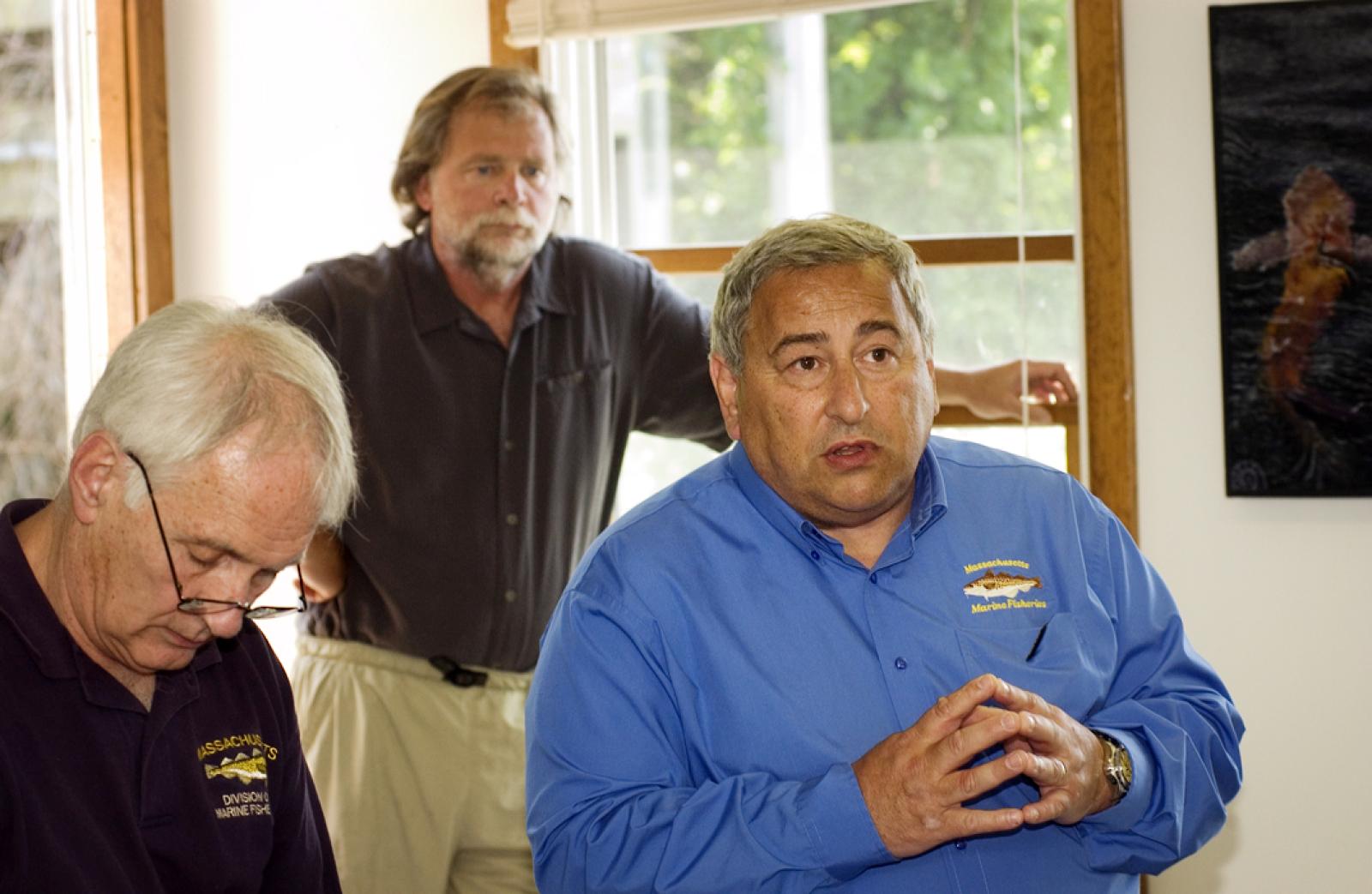A top state fisheries official told a Vineyard gathering on Friday afternoon that it is not feasible to restore the 61-year-old state lobster hatchery — at least not for raising young lobsters for release.
“We have no evidence that we did enhance the wild population to any significant degree at all,” said Paul Diodati, director of the Massachusetts Division of Marine Fisheries. “That and the cost in the past 10 years of government has become a real concern. Funding has withered,” he added.
Citing evidence of a fishery in deep trouble, two weeks ago scientists for Mr. Diodati’s agency called for a five-year moratorium on lobstering from southern New England to Virginia.
A group of Island leaders, including some selectmen and the county fishermen’s association, have expressed an interest in reopening the hatchery, which closed 14 years ago due to dwindling state interest as well as funding.
Held on the second floor of the old hatchery on the Lagoon Pond in Oak Bluffs, the Friday meeting was attended by Tisbury and Oak Bluffs selectmen and state Rep. Timothy Madden, among others.
“Opening the hatchery again would contribute to aquaculture, create jobs and attract tourism. It could reach for self-sustainability by pairing the facility with public education,” declared Oak Bluffs selectman Kathy Burton. “It is an opportunity,” she added.
Mr. Madden echoed her remarks. “We have willing participants, interested in a facility that is not in disrepair,” he said, adding: “It wouldn’t take much to bring it back with volunteers. Asking questions is how we achieve these things. Let us look at the opportunity and not put blinders up. Let us see what we can do. I think there are Vineyarders willing to step up to the plate.”
But Mr. Diodati had a slightly different view.
He said the state may possibly look favorably on the idea of turning the hatchery into some kind of shellfish aquaculture facility, similar to the one run by the Martha’s Vineyard Shellfish Group, also on the Lagoon.
But he also warned that much has changed since the lobster hatchery operated as a public facility and then closed. He said making the facility public would be a problem. “Things have changed since the 1940s; to be a true state-run, public facility today is different, I have learned,” Mr. Diodati said.
He outlined the issues, which would include the need for an elevator, and proper bathroom facilities. “We aren’t on a septic system. We have a tight tank,” he said. With just two people doing office work at the facility at present, Mr. Diodati said the septic needs to be pumped four times a year.
And he said opening the hatchery up to the public could cause problems for the neighbors and the neighborhood. “I don’t think they’d like buses or a steady stream of public access,” Mr. Diodati said. He continued:
“Then there is a staffing problem.” A feasibility study done 10 years ago pegged the cost at $800,000 to get the facility up and running again with an educational component. “That [study] sat on the shelf until the next administration came along. I can tell you now that it isn’t even on the shelf,” Mr. Diodati said. “What it would cost the state to provide the financial audits each year would equal the amount of money that we brought in. That would be difficult for us.”
In a somewhat brighter tone, he said: “I wouldn’t discourage partners. I think there is some opportunity, there is some feasibility work that could be done. I hate to suggest that we go away and do a report, but I think that would be needed and that would be very helpful.”
Mr. Madden referred to a forum held two weeks on the Vineyard with the U.S. Department of Agriculture, where it was suggested that the lobster hatchery could be eligible for grant money. “I was encouraged,” Mr. Madden said.
Warren Doty, a Chilmark selectman, director of the Dukes County-Martha’s Vineyard Fishermen’s Association and board member of the Martha’s Vineyard Shellfish Group, urged Mr. Diodati to explore working with his agency and the shellfish group. “There are different kinds of ideas out there. It doesn’t have to operate 12 months a year. You can operate six months a year. That will cut costs,” Mr. Doty said.
For example, Mr. Doty said the shellfish group’s hatchery at the other end of the pond is severely restricted in its available space. “You have excess space. We could produce the shellfish seed. This could be a grow-out facility,” Mr. Doty said. By raising shellfish seed to a larger size, he said there is better certainty that the shellfish will survive.
In the end it was agreed that the selectmen would form a committee and come up with ideas that could be offered to the state.
Afterwards state officials were given a tour of the shellfish group’s solar hatchery.
Mr. Madden said after the tour that he remains hopeful about the outcome.







Comments
Comment policy »